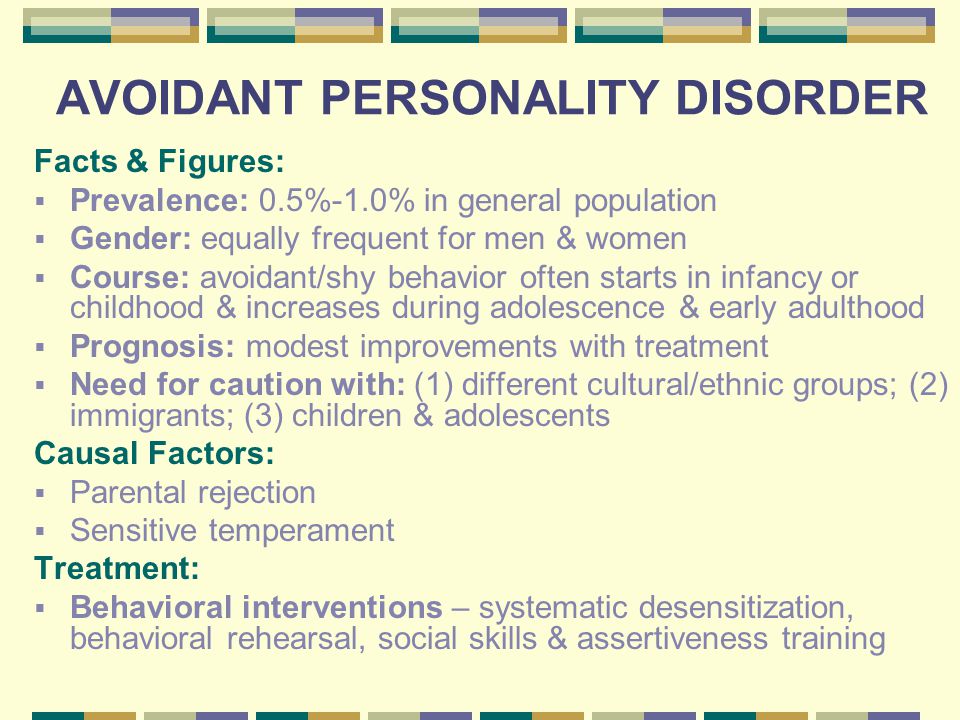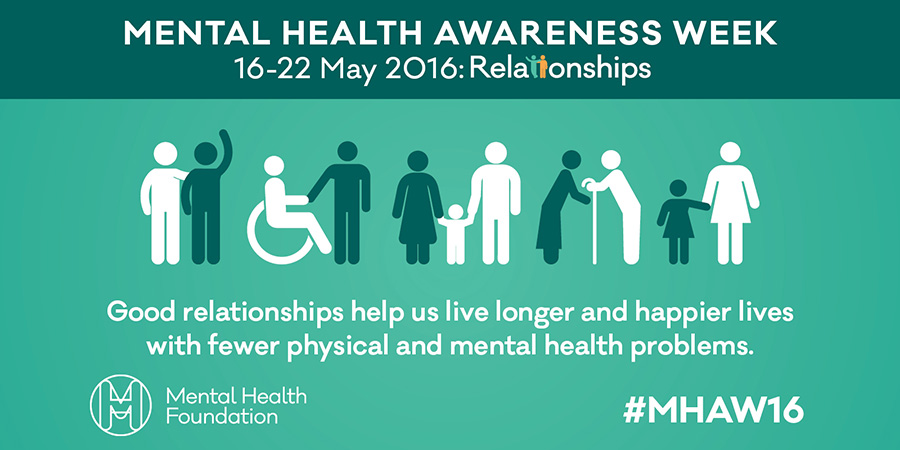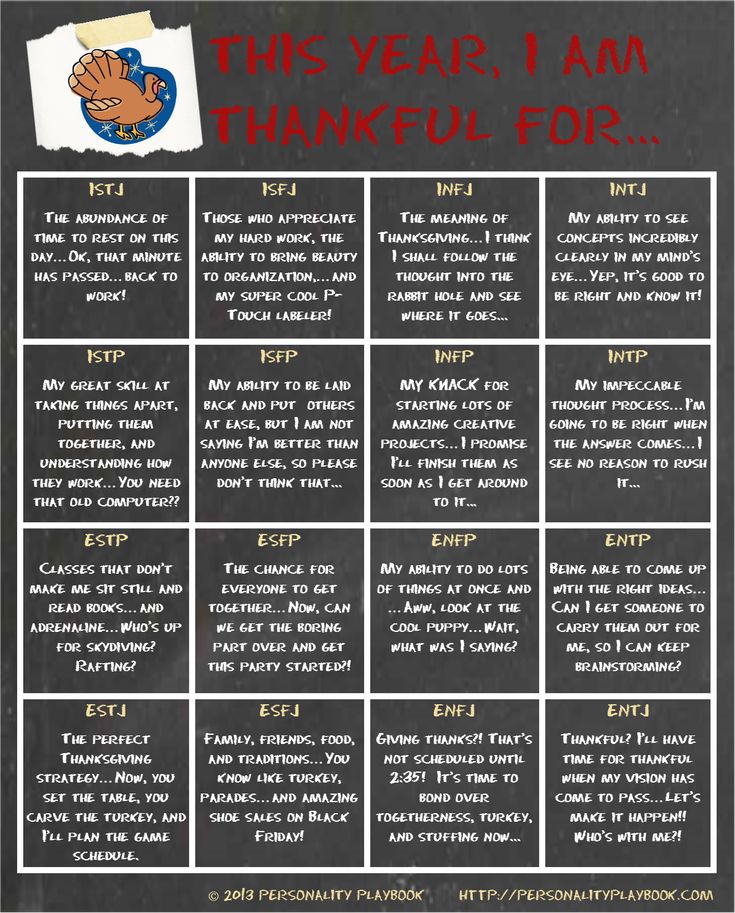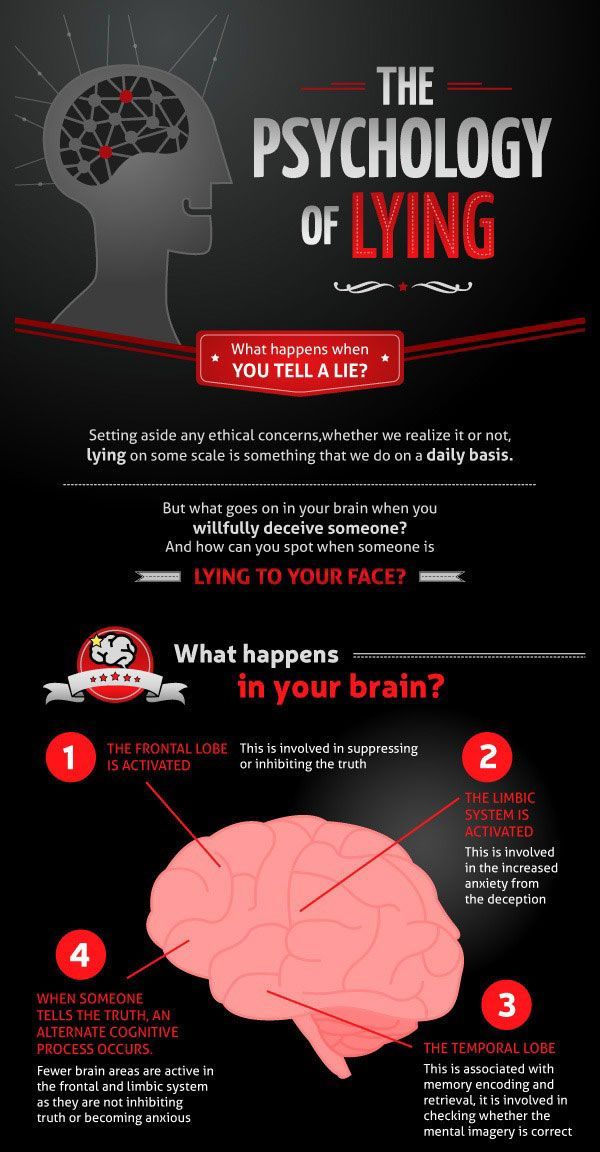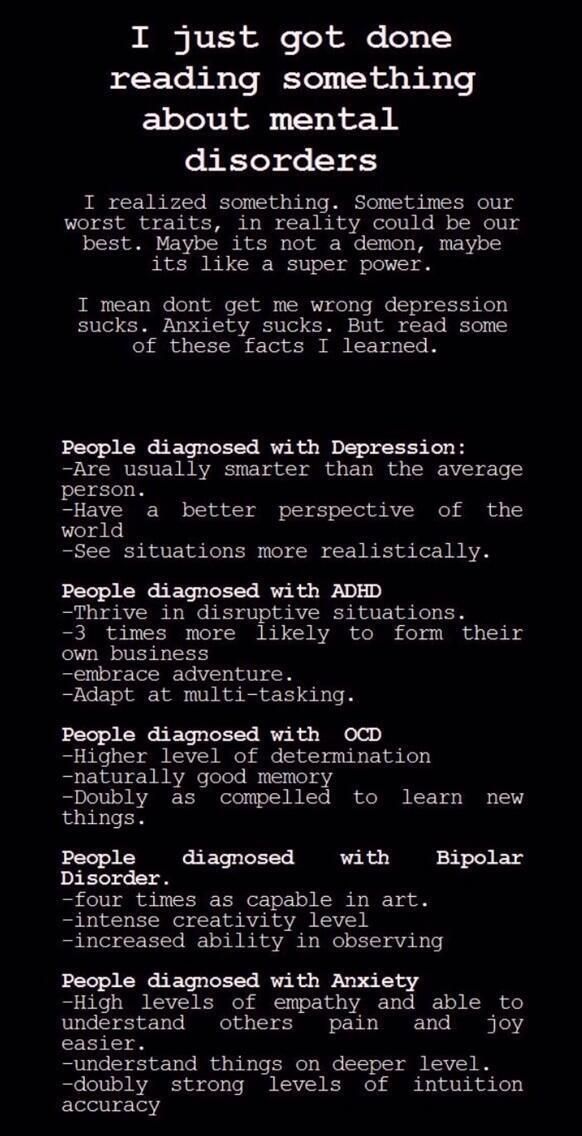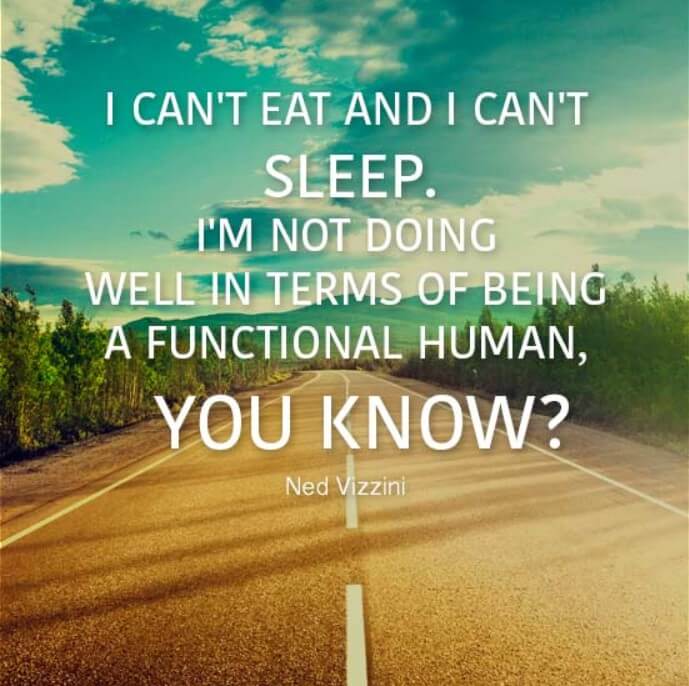Trying to change
Stop Trying to Change Yourself—Change Your Actions
You can’t change yourself, so don’t even try. I know that’s not what the infomercials and self-help seminars tell you. But fuck it. They’re wrong. You can’t change. Like a thirsty man in a desert chasing a mirage, or a fat man peering into an empty fridge—there’s nothing there. So stop chasing it. Go do something else instead.
Why can’t you change yourself? Because the whole idea of change is an arbitrary construct. It’s something you just made up to make yourself feel good (or bad).
Yesterday, I hadn’t written this article. Today, I have. Did I change?
Both yes and no are correct answers, depending on how I define change. Technically, you are both always changing and never changing. It just depends on how you look at it. What you decide is change or not is an imaginary line drawn in your head.
I could decide that “changing myself” means having a billion dollars. I’ll then sit around beating myself up for not being able to “change” for the rest of my life. Therefore, that’s not a very useful definition of “change.”
Or I could decide that “changing myself” means not putting ketchup on my french fries. If that’s the case, then change is pretty damn easy. But does my definition of “change” mean anything? Not really.
What Is Change?
When people lie around whining to their therapists and ex-wives that they’re finally going to “change” themselves, they are promising something imaginary and made up. If they used to lie and now they stopped lying, have they “changed”? Are they permanently and irrevocably “fixed”? Will they never lie again? And even if they don’t, will it matter? Please tell us—millions of pissed off ex-wives would like to know.
We don’t know what change is because we don’t know what the hell we are. If I wake up tomorrow and do the exact opposite of everything I do today, am I a changed person? Or am I simply the same person who decided to try something different?
And more importantly, who fucking cares?
I don’t. And neither should you.
And neither should you.
Here’s the problem with using the word “change:” it gets your identity involved. And when you get your identity involved, you become really emotionally attached to imaginary things. You throw fits and beat yourself up and blame others and decide that you are, in fact, a worthless piece of shit who has no hope in this world.
It’s one thing to say, “I want to start going to the gym every week.” It’s another to say, “It’s time I finally change and become the type of person who goes to the gym each week.”
The first statement is simple. You want to go to the gym. So, you go (or not).
The second statement implies that to go to the gym, you must completely reinvent yourself. And that raises the emotional stakes massively. If you succeed (spoiler: you probably won’t), you’ll gain this blissful feeling of being a “new person,” which will last until the next time you feel crappy and want to “change” again. If you fail, you’ll chastise yourself for your irredeemable laziness.
And that’s the problem with getting your identity involved. If/when you fail at something, you start thinking: “Maybe I’m kidding myself. Maybe I’m not one of those gym people. Maybe this just isn’t me. So why even try?” Because you’ve decided these arbitrary actions represent the totality of your character, you will view your failure to get off your ass and put on yoga pants as a verdict on your value as a human being. You will hate yourself. And you will be less motivated to “change” or do anything else in the future.
On the flip side, if you succeed, like all drugs, you’ll get this nice high and momentarily escape your sense of yourself. But soon, that high will wear off, and you’ll need to define for yourself a new type of “change” to accomplish, and you’ll pursue that. You’ll then become addicted to personal change the same way Eric Clapton was addicted to cocaine or Edgar Allan Poe was addicted to drinking until he passed out face-down in a ditch.
Here’s a pro-tip: there’s no such thing as a “gym person.” There are just people who go to the gym. Similarly, there’s no such thing as a “productive person.” There are just people who do productive things fairly often. There’s no such thing as a “lovable person.” There are just people who aren’t selfish twats.
It’s not always about you (in fact, it rarely is)
In The Subtle Art of Not Giving a Fuck, I wrote about the importance of maintaining an identity that is defined by as little as possible. That’s because when we get our identities involved—when we decide that certain behaviors or events represent our worth as a human being—things get emotionally turbulent.1,2 And when things get emotionally turbulent, we tend to do really dumb shit.3,4
Instead, think of your life merely as a long sequence of actions and decisions. If you’re like most people, many of these actions and decisions are less than ideal. And what most of us mean when we say we’d like to “change” ourselves is simply that we’d like to make slightly better actions and decisions.
And what most of us mean when we say we’d like to “change” ourselves is simply that we’d like to make slightly better actions and decisions.
For years, I hated mornings. Pretty much my entire life, I woke up late. This would cause a little snowball of shittiness in my life. I’d be behind on work all day. So then I’d have to stay up half the night working. Then I’d be tired and stressed out the next day. So I’d stay up even later the next night trying to catch up. By the end of the week, I’d be a wreck. So to escape I’d go out drinking and partying to unwind way too much, which would just fuck me up even further the next week.
I still somehow managed to build a career. Don’t ask me how (answer: a small truckload of caffeine). But instead of recognizing that I did okay despite my own bad habits, I made it about me. I made it part of who I was.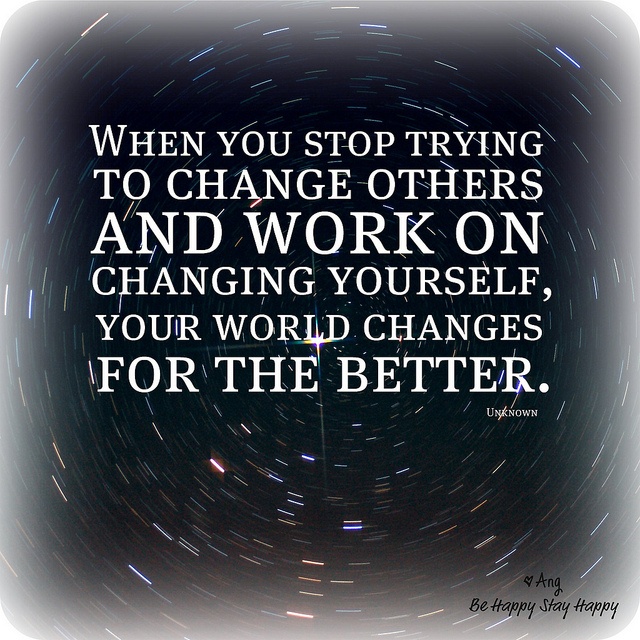 I decided it was my identity. I said, “Yeah, I’m a badass. Fuck waking up early. Fuck getting sleep. I don’t need that shit. Look at me, Mom, I can work all night!”
I decided it was my identity. I said, “Yeah, I’m a badass. Fuck waking up early. Fuck getting sleep. I don’t need that shit. Look at me, Mom, I can work all night!”
And you can get away with that when you’re 22. But you can’t when you’re 32.
In my 30s, I began to struggle with productivity. And instead of recognizing my terrible habits, I told myself, “Well, I’m just not a morning person.” “Oh, I don’t do that sort of morning routine stuff.” Without me realizing it, this was tantamount to me giving up before I started. The times I’d try to get up early or to workout first thing or to eat a healthy breakfast, I’d struggle and immediately tell myself, “See? This morning stuff isn’t for me.”
Eventually, I had to get over myself. I had to decide that, you know what, I don’t know who the hell I am or what I’m doing, but I do know that historically and scientifically and anecdotally, and anyone who is not an idiot knows, that waking up early and starting the day off with a nice, simple routine is a healthy and productive way to live one’s life.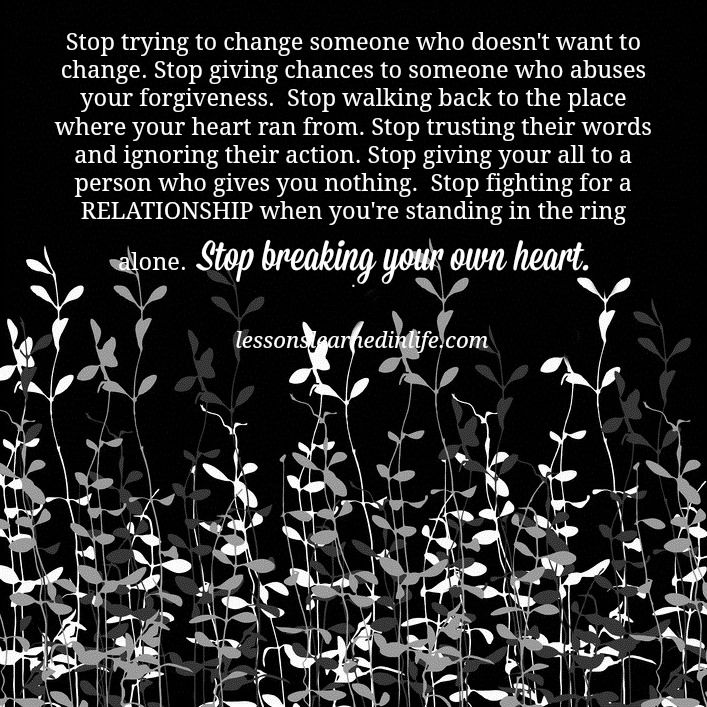 5
5
And so I did it. I removed my identity from it and just did it because it’s a good thing to do. Now I get up early. And I meditate (usually) and eat something greenish and healthy and bang out a bunch of writing as soon as I possibly can.6
And does that make me a “morning person?” Does that make me a “productive person?” Who knows? Who cares? I don’t. And it was by not caring that made it possible for me to do it.
Keep your “self” out of your decisions, because most likely, it’s not about “you.” Simply ask yourself, “Is this a good thing to do?” Yes? Then go do it.
Oh, you failed to do it? Is it still a good thing to do? Yes? Then go do it again. And if, at any point, you realize that it wasn’t as good as you thought, then don’t do it again.
End of story.
Change Your Actions, not yourself
Most of us who feel stuck in certain habits are stuck because we’re emotionally embedded in unhealthy behaviors. A smoker doesn’t just smoke cigarettes.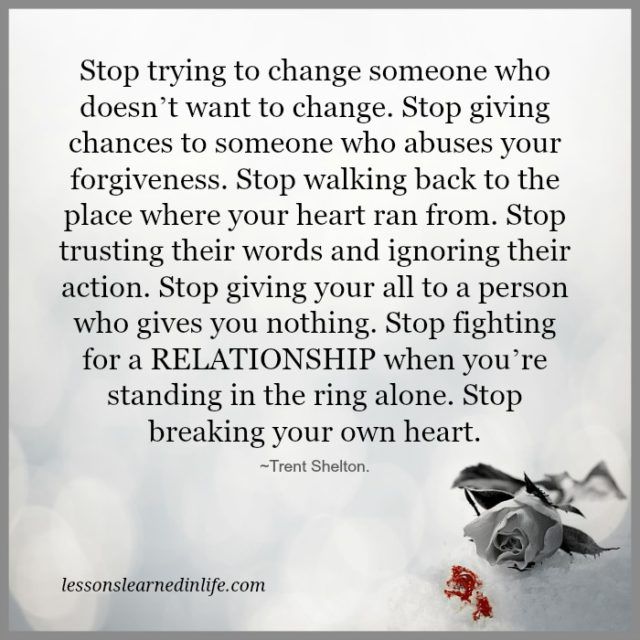 They develop a whole identity around smoking. It alters their social life, their eating and sleeping habits, how they see themselves and others. They become “the smoker” to their friends and family. They develop a relationship with cigarettes the same way you and I develop a relationship with a pet or a favorite toy. Or our phones.
They develop a whole identity around smoking. It alters their social life, their eating and sleeping habits, how they see themselves and others. They become “the smoker” to their friends and family. They develop a relationship with cigarettes the same way you and I develop a relationship with a pet or a favorite toy. Or our phones.
When someone decides to “change” themselves and quit smoking, they are essentially attempting to “change” their entire identity—all of the relationships, habits, and assumptions that have gone into X years of doing a singular thing. No wonder New Year’s Resolutions don’t last. No wonder that often fails.
The trick to quitting smoking (or to changing any habit) is to recognize that your identity—that elaborate mental framework you devised in your mind and labeled “me”—doesn’t actually exist. It is arbitrary. It is a facade. And it can be raised or dropped at will. It is a choice.
You are not a smoker. You are a person who chooses to smoke.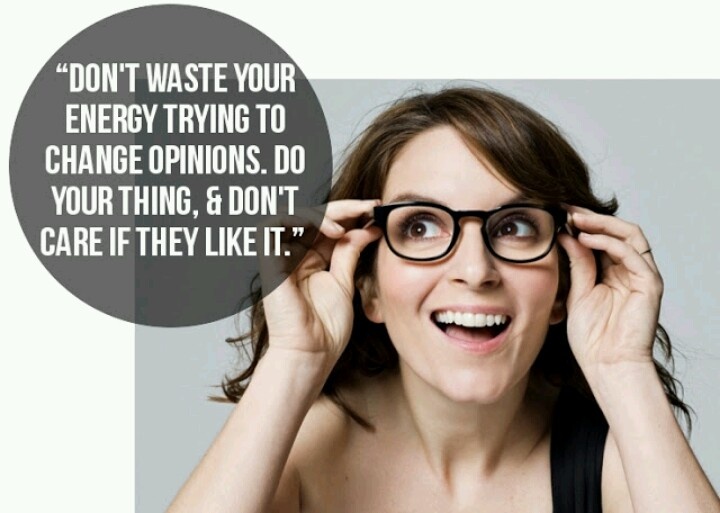 You are not a night person. You are a person who chooses to be active at night and sleep through the morning. You are not unproductive. You are a person who currently chooses to do things that do not feel useful. You are not unloveable. You are a person who currently feels unloved.
You are not a night person. You are a person who chooses to be active at night and sleep through the morning. You are not unproductive. You are a person who currently chooses to do things that do not feel useful. You are not unloveable. You are a person who currently feels unloved.
And changing these actions is as simple as… changing your actions. One action at a time.7,8 Forget labeling it. Forget social accountability (in fact, research has found that sharing goals with others can often backfire). Forget making a big hoo-ha-ha about who you are or what you are or what the fucking Pope thinks about you.
Because he doesn’t. And neither do most of the rest of us. And neither do you, for that matter. Your identity is this made up thing that you’re emotionally attached to. It’s a mirage in the desert. A ketchup bottle in an empty fridge. And the quickest way to change yourself is to realize that there’s no real self to change.
Footnotes
- Ng, N.
 , Weinehall, L., & Öhman, A. (2007). ‘If I don’t smoke, I’m not a real man’—Indonesian teenage boys’ views about smoking. Health Education Research, 22(6), 794–804.↵
, Weinehall, L., & Öhman, A. (2007). ‘If I don’t smoke, I’m not a real man’—Indonesian teenage boys’ views about smoking. Health Education Research, 22(6), 794–804.↵ - Gardner, B., Bruijn, G.-J. de, & Lally, P. (2012). Habit, identity, and repetitive action: A prospective study of binge-drinking in UK students. British Journal of Health Psychology, 17(3), 565–581.↵
- Helweg-Larsen, M., Sorgen, L. J., & Pisinger, C. (2019). Does it help smokers if we stigmatize them? A test of the stigma-induced identity threat model among U.S. and Danish smokers. Social Cognition, 37(3), 294–313.↵
- Townsend, S. S. M., Major, B., Gangi, C. E., & Mendes, W. B. (2011). From “In the Air” to “Under the Skin”: Cortisol Responses to Social Identity Threat. Personality and Social Psychology Bulletin, 37(2), 151–164.↵
- Arlinghaus, K. R., & Johnston, C. A. (2018). The Importance of Creating Habits and Routine.
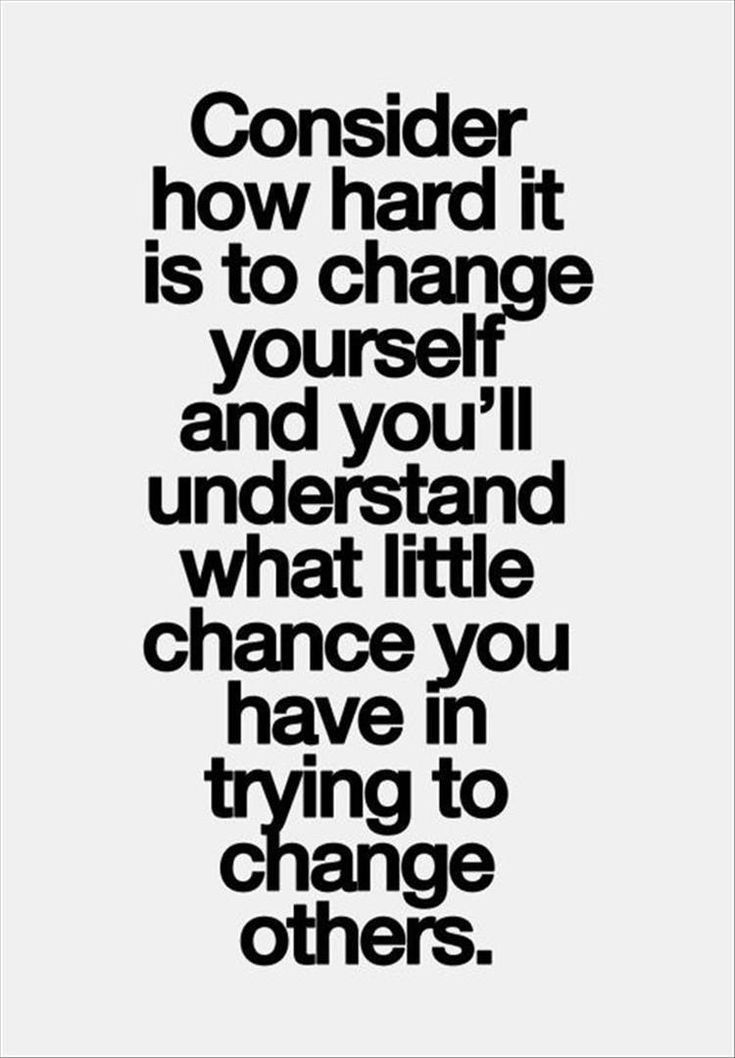 American Journal of Lifestyle Medicine, 13(2), 142–144.↵
American Journal of Lifestyle Medicine, 13(2), 142–144.↵ - Zeidan, F., Johnson, S. K., Diamond, B. J., David, Z., & Goolkasian, P. (2010). Mindfulness meditation improves cognition: Evidence of brief mental training. Consciousness and Cognition, 19(2), 597–605.↵
- Clear, J. (2018). Atomic Habits: An Easy & Proven Way to Build Good Habits & Break Bad Ones. Avery.↵
- Duhigg, C. (2012). The Power of Habit: Why We Do What We Do in Life and Business. Random House.↵
When We Try to Change Others and Avoid Ourselves
“I’ve discovered that you can’t change people. They can change themselves.” ~Jim Rohn
This is indeed a fact—a fact I took a long time to learn.
You may argue that we help each other change, and it’s true. But the deepest truth is that only we are responsible for our own growth.
The most difficult work is the seemingly minuscule shift from resistance to willingness, which allows us to face the difficult things we’ve been hiding from, and only we can do this for ourselves.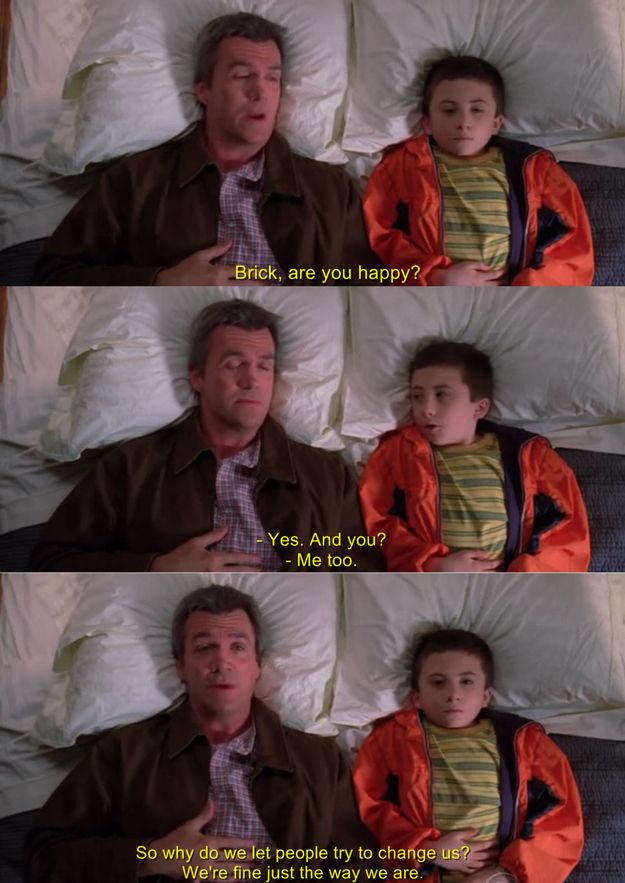
I had boyfriends who had issues. One of them lacked ambition; he was already lost when we met around age sixteen. I, on the other hand, was born with sparks at my heels. It took me two years to have the courage to break up with him.
I dated another sweet guy who also happened to be lost. His mouth said a lot of things about what he wanted to do with his life, but his body seemed to be paralyzed. I figured this out pretty early on and broke things off.
Then his cousin called to tell me he was okay but that he’d been shot (wrong place, wrong time they say), and I dropped everything to take care of him. I convinced myself this was the catalyst for his change. It wasn’t. Almost a year later we broke up.
Then there were other guys with other issues. Some of them frozen in fear from traumatic circumstances and others with kinks they were unwilling to iron out.
Then I was twenty-nine, and I met this guy I told my roommate was “really great, but not gonna be my boyfriend. ” He kept asking me out and he kept having nothing but positive qualities, so I found myself in love.
” He kept asking me out and he kept having nothing but positive qualities, so I found myself in love.
And he loved every ounce of me. Suddenly I was wrapped up in a man who thought I was spectacular just as I was, and couldn’t help but tell me every chance he got.
His unconditional acceptance allowed me to see that I had been busy trying to save men instead of saving myself.
Only through the cloak of genuine love can we have the courage to face the darkest things about ourselves, things we’ve been hiding from our whole lives. And I was ready for it, so it all spilled right out.
I saw that my whole life I had been trying to be someone instead of simply allowing myself to be.
I realized that part of the reason I had been drawn to the men from my past was because helping them gave me a sense of control. I didn’t trust them to figure it out on their own; I didn’t trust myself to be with a man who was genuinely strong because I wasn’t yet.
I was afraid of losing them and the feeling of worthiness they provided me, so I tried to control their lives and my own.
I believed I could manipulate circumstances to create my happiness. And one day I woke up to the recognition that trying to control everything in my life hadn’t worked out very well for me, and, frankly, it was exhausting.
It was simply much easier to accept things as they were; the burden was gone, the trying, the effort, the need for things to be different.
I wasn’t nudged or asked to work on these things. I did it for myself. Because I needed to.
So I think we need to stop asking each other to change. We need to embrace who it is we see in the moment and accept them as they are. If they can’t be in our lives in the way we’d like because of who they are in that moment, then we get to make the choice to move on.
But we can’t force each other to change.
Sticking around because we see potential, in turn, stifles ourselves.
We spend so much energy trying to be okay with who we’re with instead of really being okay with them. And if we’re not okay with them as they are, then it’s okay to walk away. It’s okay to walk away.
I had to walk away from the man who changed my life. Because I had loved and been loved so deeply, the loss of that relationship left me in a deep depression. For the first time in my life I didn’t really care about anything. But it turns out that letting go is one of the gorgeous gifts of life.
I embraced love and truth and difficult feelings and no feelings at all. On the other side of letting go I was left in the residue of the truth of my humanity; I am always left with myself, and it’s myself that I must remain true to.
When we desperately try to make something work that just isn’t working, we waste an immense amount of energy and create a lot of suffering.
So, when we finally walk away we feel light (eventually). We realize we are full as we are and so we attract fullness. When we do this we’re allowing the highest love to come into our lives.
Something Jim Rohn also says is this, “The greatest gift you can give to somebody is your own personal development. I used to say, ‘If you take care of me, I will take care of you.’ Now I say, ‘I will take care of me for you, if you take care of you for me.’”
Each relationship I’ve had has become a part of me. The love still exists, and the pain transforms into love when we allow it. The difficult truth is that when someone is hiding in fear or suffering in pain or rejecting our love, we have to allow them to do that.
We’re not here to fix each other or change each other. Sometimes the best choice is to let go and trust each of us to handle our own journey.
About Michelle D'Avella
Michelle D’Avella is an author, Breathwork teacher and mentor. Her memoir, The Bright Side of a Broken Heart is available here. Download her FREE guide to heal your heart and follow her on Instagram for daily doses of inspiration.
See a typo or inaccuracy? Please contact us so we can fix it!
Add slide numbers, pages, date and time
Text and tables
Text and tables
Text and tables
Adding slide numbers, pages, date and time
- Inserting a WordArt
Article - Adding a hyperlink to a slide
Article - Create a PowerPoint presentation from an outline
Article - Checking spelling in a presentation
Article - Create and format a table
Article - Insert a linked Excel chart in PowerPoint
Article - Adding slide numbers, pages, date and time
Article - Set the direction and position of text
Article
Further: Images and drawings
PowerPoint for Microsoft 365 PowerPoint for Microsoft 365 for Mac PowerPoint 2021 PowerPoint 2021 for Mac PowerPoint 2019 PowerPoint 2019 for Mac PowerPoint 2016 PowerPoint 2016 for Mac PowerPoint 2013 PowerPoint 2010 More. ..Less
You can add slide numbers and date and time to your presentation.
1. Date and time
2. Slide number
To add header and footer information to handouts , see Change headers and footers for handouts in PowerPoint.
Adding slide numbers or note page numbers
-
On the tab View , in the group Presentation Views , click the button Normal .
-
On the left side of the screen, in the slide thumbnail area, click the thumbnail of the first slide in the presentation.
-
On tab Insert , in group Text , click button Headers and footers .
-
In the Header and Footer dialog box, do one of the following:
-
To add slide numbers, go to the Slide tab and check the box Slide Number .
-
To add page numbers to your notes, open the Notes and Handouts tab and select the Page number check box.
-
-
To add page numbers to all slides or notes in a presentation, press the Apply to all .
Change the start number of the slide
You can change the number at which numbering starts, add the number to only one slide, or remove it from the first slide. Here's how to do it:
-
On tab Design in group Customize click Slide Size and then click Set Slide Size .
-
In the Slide Size dialog box, in the Number slides from drop-down list, select the starting number.
Adding a number to only one slide, or to all slides except the first
-
On the Insert tab, in the Text group, click the Headers and Footers button.
-
In the Header and Footer dialog box, click the Slide tab.
-
Do one of the following:
-
To number the selected slide, select the Slide number check box, and then click the Apply button. Repeat this step for each slide you want to number.
-
To number all slides except the first one, select the Slide number and Don't show on title slide check boxes, and then click the Apply to all button.
-
To change the order of slides in a presentation, see Change the order of slides.
Add date and time
-
On the View tab, in the Presentation Views group, click the Normal button.
-
On the left side of the screen, in the slide thumbnail area, click the thumbnail of the first slide in the presentation.
-
On the Insert tab, in the Text group, click the Date and Time button.
-
In the Header and Footer dialog box , do one of the following:
-
To add date and time to slides, click tab Slide .
-
To add the date and time to your notes pages, click the Notes and Issues tab.
-
-
Select the Date and time check box, and then do one of the following:
-
To change the date and time to the current values every time you open or print a presentation, set the radio button Auto update to and select the desired date and time format.
-
To specify a specific date, set the radio button to Fixed and then in the Fixed field, enter the desired date.
By setting a fixed date for a presentation, you can easily determine when the last changes were made.
-
-
To add the date and time to all slides, note pages, or handout pages in a presentation, click the Apply to all button .
Adding slide numbers or note page numbers
-
On the View tab, in the Presentation Views group, click the Normal button.
-
On the left side of the screen, in the slide thumbnail area, click the thumbnail of the first slide in the presentation.
-
On the Insert tab, in the Text group, click the Slide number button.
-
In the Header and Footer dialog box, do one of the following:
-
To add slide numbers, go to tab Slide and check the box Slide number .
-
To add numbers to note pages, open the Notes and handouts tab and select the Page number check box.
-
-
To add page numbers to all slides or notes in a presentation, press the Apply to all .
Change the start number of the slide
You can change the number at which numbering starts, add the number to only one slide, or remove it from the first slide. Here's how to do it:
-
On tab Appearance in group Page Setup click Page Setup .
-
In the Page Setup dialog box, in the Number slides from drop-down list, select the starting number.
Adding a number to only one slide, or to all slides except the first
-
On the Insert tab, in the Text group, click the Slide number button.
-
In the Header and Footer dialog box, click the Slide tab.
-
Do one of the following:
-
To number the selected slide, select the Slide number check box, and then click the Apply button. Repeat this step for each slide you want to number.
-
To number all slides except the first, select the 9 checkboxes0049 Slide number and Do not show on title slide and then click Apply to all .
-
To change the order of slides in a presentation, see Change the order of slides.
Add date and time
-
On the View tab, in the Presentation Views group, click the Normal button.
-
On the left side of the screen, in the slide thumbnail area, click the thumbnail of the first slide in the presentation.
-
In tab Insert in group Text press button Date and time .
-
In the Header and Footer dialog box , do one of the following:
-
To add date and time to slides, click the tab Slide .
-
To add the date and time to the notes pages, open the Notes and Issues tab.
-
-
Select the Date and time check box, and then do one of the following:
-
To change the date and time to the current values each time you open or print a presentation, select radio button Auto update and select the desired date and time format.
-
To specify a specific date, set the radio button to Fixed and then in the Fixed field, enter the desired date.
By setting a fixed date for a presentation, you can easily determine when the last changes were made.
-
-
To add the date and time to all slides, note pages, or handout pages in a presentation, click the Apply to all button .
See also
Adding, reordering, and deleting slides
Displaying the slide number and their total number on each slide
Change the order of slides
Inserting and deleting slide numbers
-
On tab View click Normal .
-
Select Insert > Slide Number .
-
Select Slide Number and enter the starting slide number. Area View displays the location.
-
To add or remove a slide number from the title page only, clear or select the Don't show on title slide check box.
-
Select Apply to all or Apply .
9 provocative productivity tips that work
October 18 Productivity
Stop visualizing success, register in five social networks and other seemingly dubious ways.
Share
0We've all heard the standard productivity tips: get enough sleep, eat right, create a pleasant work environment, and so on. And it all really works. But today we will go in a different direction. He was prompted by a quote from American speaker and author of How to Work 4 Hours a Week, Timothy Ferris: “To do the impossible, you must ignore the popular.”
1. Give up
We are constantly on a quest called Stay Productive or Stay Motivated. Japanese psychiatrist Shoma Morita considered this the wrong way to think about personal effectiveness.
Most of our achievements did not happen at all because we were somehow especially motivated. Contemporary practitioner of Morita Therapy James Hill argued O. Burkeman. The key to getting motivated: Give up / 99U is: “Is it true that we should overcome fear before jumping off a diving board and become more confident before asking someone out on a date? If that were true, we wouldn't have done anything."
Instead of looking for motivation, embrace all the negativity, fear, and dread that the task brings to you. Say to yourself, “Yeah, right now I’m not excited about working on it.” And then start acting without trying to change your own feelings and emotions.
2. Procrastinate
Productivity experts usually tell you to focus on your most important task in the morning. In real life, when we see this item at the top of our to-do list, we want to do anything but this.
The key is to give in to your reluctance to do the most important task. Instead, deal first with simple projects that do not cause discomfort. Thanks to this trick, the brain will begin to perceive easy tasks as more important, which means that it will be much easier for you to force yourself to take on the main thing. You will no longer be afraid of him.
3. Work less
Co-author of Life at Full Power! Tony Schwartz believes that working more is not an option, and offers another solution. Its essence is simple: distribute energy, not time.
If you start to work less, you will have to think more about exactly what tasks you direct your efforts to.
4. Stop saying yes
This is the best way to take back control of your time. Of course, it is much more difficult to refuse than to agree. Therefore, you need an effective strategy that will help you defend your interests.
One of the most interesting studies V. M. Patrick, H. Hagtvedt. “I Don’t” versus “I Can’t”: When empowered refusal motivates goal-directed behavior / Journal of Consumer Research on this topic showed that small details matter here. Instead of directly refusing, the authors asked participants to say "I can't do something" or "I don't do something" when faced with some kind of temptation under the conditions of the experiment.
In the end, those who said “I can't eat chocolate” still chose a candy bar when they left the room 61% of the time. And those who said “I don’t eat chocolate” took it only 36% of the time. Simply changing the wording helped participants make healthier choices.
There are two easy ways to say no easily:
- Decide in advance what you will and will not do. For example, "I don't drink" or "I stay up after midnight." This will make it easier to avoid any potential temptations.
- Take responsibility for the implementation of the decisions made. Write them down, tell family and friends about them, or hang them as a poster above your bed.
Try it 🤐
- 4 Ways to Say No without Saying No
5. Get Rejected
That's why it's time to stop being angry and disappointed. It is better to accept with open arms the cases when you are rejected and work on your reaction.
Experiment Revenge of the nerds: Social rejection can “lead to imaginative thinking and strong independence” / Daily Mail, conducted at Johns Hopkins University, confirms this. The participants were divided into two groups. They were asked personality type questions and then told they might be considered for inclusion in a new research group. The participants returned two weeks later and were asked to complete several of the same tasks. Only the first group was announced before that that they had passed the selection, and the second - that they had not passed.
You may have already guessed what the result of the study was. Participants who were "rejected" performed better on the tasks than participants who "got" into the new group. At the same time, the most impressive successes were shown by those whom scientists described as “independents”.
According to study author Sharon Kim, social rejection can inspire us to think imaginatively. This is especially evident among people with strong independence.
6. Use at least five social networks
Blocking social networks in the workplace is not the best strategy for productivity. Monitoring Social Media: Not the productivity killer you thought? / Inc. hundreds of Fortune 500 companies showed a correlation between social media usage and productivity. Employees who were registered on more than five social networks had a 1.6% higher sales conversion rate than others.
Of course, correlation and causation are not the same thing. However, scientists believe that people with a good knowledge of technology are not only much more productive, but also able to stay in one place of work longer.
The secret of such people is not at all in the number of social media accounts, but in the fact that they are more technologically savvy and think more about what motivates them to be productive.
7. Check email every morning
Productivity experts unanimously oppose spending time checking email. However, the most successful people in the world, including Apple CEO Tim Cook, start with this.
Of course, it all depends on your position. You may not need to check your inbox early in the morning. But if it makes your life much easier, it is better not to give up such a habit.
8. Stop visualizing goals or sharing them with others
We are often given this advice: “Write down your goals and hang them on the wall so you can look at them and remember them every day!” Sounds good in theory. We see our desires, take responsibility for them, which means that we are much more likely not to stop halfway and get what we have planned.
According to researchers Heather Kappes and Gabriel Oettingen, this is not entirely true. They believe that positive fantasies about achieving success pump out H. B. Kappesa, G. Oettingen. Positive fantasies about idealized futures sap energy / Journal of Experimental Social Psychology The pleasant feeling that arises when we formulate a goal, tell others about it, or write it down, rather, reduces our chances of achieving it. This is because we involuntarily make our brain think that we have already achieved everything and that we can not make much effort.
It's best to keep your plans to yourself.


